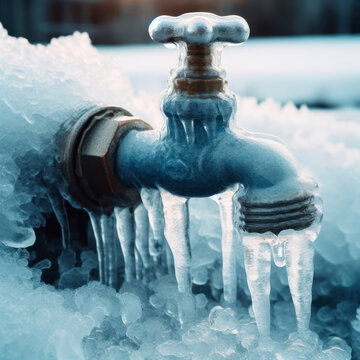Preventing Pipes from Cold Weather: Top Tips
Preventing Pipes from Cold Weather: Top Tips
Blog Article
This great article below about 6 Ways to Prevent Frozen Pipes is without a doubt enlightening. Don't overlook it.

Cold weather can ruin your plumbing, especially by freezing pipes. Below's how to prevent it from happening and what to do if it does.
Intro
As temperatures decline, the risk of frozen pipelines boosts, possibly causing costly fixings and water damages. Recognizing how to stop icy pipes is vital for homeowners in cold environments.
Prevention Tips
Insulating at risk pipes
Wrap pipes in insulation sleeves or use warm tape to secure them from freezing temperatures. Focus on pipes in unheated or external locations of the home.
Heating methods
Maintain indoor rooms properly heated, specifically locations with pipes. Open closet doors to enable cozy air to circulate around pipes under sinks.
How to recognize icy pipelines
Try to find decreased water circulation from taps, uncommon odors or noises from pipes, and noticeable frost on exposed pipelines.
Long-Term Solutions
Structural adjustments
Consider rerouting pipelines far from outside wall surfaces or unheated areas. Include extra insulation to attics, cellars, and crawl spaces.
Updating insulation
Buy high-quality insulation for pipes, attic rooms, and wall surfaces. Appropriate insulation aids keep constant temperatures and lowers the danger of icy pipelines.
Safeguarding Outdoor Plumbing
Garden pipes and outdoor faucets
Detach and drain pipes yard hoses before winter months. Install frost-proof spigots or cover outside faucets with shielded caps.
Understanding Frozen Pipelines
What triggers pipelines to freeze?
Pipelines ice up when exposed to temperatures below 32 ° F (0 ° C) for expanded durations. As water inside the pipes ices up, it increases, putting pressure on the pipe wall surfaces and potentially causing them to burst.
Dangers and damages
Frozen pipes can lead to water system disruptions, home damages, and costly repair work. Ruptured pipelines can flood homes and create substantial architectural damage.
Signs of Frozen Pipes
Determining icy pipes early can stop them from bursting.
What to Do If Your Pipes Freeze
Immediate actions to take
If you think icy pipelines, maintain taps open up to soothe pressure as the ice melts. Make use of a hairdryer or towels taken in hot water to thaw pipelines gradually.
Verdict
Preventing icy pipelines calls for positive actions and quick feedbacks. By understanding the reasons, indicators, and preventive measures, property owners can safeguard their pipes during winter.
5 Ways to Prevent Frozen Pipes
Drain Outdoor Faucets and Disconnect Hoses
First, close the shut-off valve that controls the flow of water in the pipe to your outdoor faucet. Then, head outside to disconnect and drain your hose and open the outdoor faucet to allow the water to completely drain out of the line. Turn off the faucet when done. Finally, head back to the shut-off valve and drain the remaining water inside the pipe into a bucket or container. Additionally, if you have a home irrigation system, you should consider hiring an expert to clear the system of water each year.
Insulate Pipes
One of the best and most cost-effective methods for preventing frozen water pipes is to wrap your pipes with insulation. This is especially important for areas in your home that aren’t exposed to heat, such as an attic. We suggest using foam sleeves, which can typically be found at your local hardware store.
Keep Heat Running at 65
Your pipes are located inside your walls, and the temperature there is much colder than the rest of the house. To prevent your pipes from freezing, The Insurance Information Institute suggests that you keep your home heated to at least 65 degrees, even when traveling. You may want to invest in smart devices that can keep an eye on the temperature in your home while you’re away.
Leave Water Dripping
Moving water — even a small trickle — can prevent ice from forming inside your pipes. When freezing temps are imminent, start a drip of water from all faucets that serve exposed pipes. Leaving a few faucets running will also help relieve pressure inside the pipes and help prevent a rupture if the water inside freezes.
Open Cupboard Doors
Warm your kitchen and bathroom pipes by opening cupboards and vanities. You should also leave your interior doors ajar to help warm air circulate evenly throughout your home.

I ran across that write up on How to prepare your home plumbing for winter weather while doing a search on the internet. Feel free to set aside a second to share this write-up if you liked it. Thanks a bunch for your time. Kindly stop by our website back soon.
See Availability Report this page